Mesoscale Resolution Radar Data Assimilation Experiments with the Harmonie Model
Abstract
1. Introduction
2. Materials and Methods
2.1. Pre-Processing of Radar Data
2.2. Configuration of Radar Data Assimilation Experiments
3. Results of Radar Data Assimilation
4. Discussion and Concluding Remarks
Author Contributions
Funding
Acknowledgments
Conflicts of Interest
References
- Gao, J.; Tang, G. Similarities and improvements of GPM Dual-Frequency Precipitation Radar (DPR) upon TRMM precipitation radar (PR) in global precipitation rate estimation, type classification and vertical profiling. Remote Sens. 2017, 9, 1142. [Google Scholar] [CrossRef]
- Ma, Y.; Zhang, Y.; Yang, D.; Farhan, S.B. Precipitation bias variability versus various gauges under different climatic conditions over the Third Pole Environment (TPE) region. Int. J. Climatol. 2015, 35, 1201–1211. [Google Scholar] [CrossRef]
- Bellerby, T.; Todd, M.; Kniveton, D.; Kidd, C. Rainfall estimation from a combination of TRMM precipitation radar and GOES multispectral satellite imagery through the use of an artificial neural network. J. Appl. Meteorol. 2000, 39, 2115–2128. [Google Scholar] [CrossRef]
- Bai, L.; Shi, C.; Li, L.; Yang, Y.; Wu, J. Accuracy of CHIRPS satellite-rainfall products over mainland China. Remote Sens. 2018, 10, 362. [Google Scholar] [CrossRef]
- Kidd, C.; Bauer, P.; Turk, J.; Huffman, G.; Joyce, R.; Hsu, K.-L.; Braithwaite, D. Intercomparison of high-resolution precipitation products over Northwest Europe. J. Hydrometeorol. 2012, 13, 67–83. [Google Scholar] [CrossRef]
- Huuskonen, A.; Saltikoff, E.; Holleman, I. The operational weather radar network in Europe. Bull. Am. Meteorol. Soc. 2014, 95, 897–907. [Google Scholar] [CrossRef]
- Ducrocq, V.; Lafore, J.-P.; Redelsperger, J.-L.; Orain, F. Initialization of a fine-scale model for convective-system prediction: A case study. Q. J. R. Meteorol. Soc. 2000, 126, 3041–3065. [Google Scholar] [CrossRef]
- Ducrocq, V.; Ricard, D.; Lafore, J.-P.; Orain, F. Storm-scale numerical rainfall prediction for five precipitating events over France: On the importance of the initial humidity field. Weather Forecast. 2002, 17, 1236–1256. [Google Scholar] [CrossRef]
- Richard, É.; Cosma, S.; Tabary, P.; Pinty, J.-P.; Hagen, M. High-resolution numerical simulations of the convective system observed in the Lago Maggiore area on the 17 September 1999 (Map IOP 2a). Q. J. R. Meteorol. Soc. 2003, 129, 543–564. [Google Scholar] [CrossRef]
- Lorenc, A.C. Analysis methods for numerical weather prediction. Q. J. R. Meteorol. Soc. 1986, 112, 1177–1194. [Google Scholar] [CrossRef]
- Seko, H.; Kawabata, T.; Tsuyuki, T.; Nakamura, H.; Koizumi, K. Impacts of GPS-derived water vapor and radial wind measured by Doppler radar on numerical prediction of precipitation. J. Meteorol. Soc. Jpn. 2004, 82, 473–489. [Google Scholar] [CrossRef]
- Salonen, K.; Järvinen, H.; Haase, G.; Niemelä, S.; Eresmaa, R. Doppler radar radial winds in HIRLAM. Part II: Optimizing the super-observation processing. Tellus 2009, 61A, 288–295. [Google Scholar] [CrossRef]
- Desroziers, G.; Ivanov, S. Diagnosis and adaptive tuning of information error parameters in a variational assimilation. Q. J. R. Meteorol. Soc. 2001, 127, 1433–1452. [Google Scholar] [CrossRef]
- Caumont, O.; Ducrocq, V.; Watterlot, É.; Jaubert, G.; Pradier-Vabre, S. 1D+3DVar assimilation of radar reflectivity data: A proof of concept. Tellus 2010, 62A, 173–187. [Google Scholar] [CrossRef]
- Jung, Y.; Xue, M.; Tong, M.J. Ensemble Kalman filter analyses of the 29–30 May 2004 Oklahoma tornadic thunderstorm using one-and two-moment bulk microphysics schemes, with verification against polarimetric radar data. Mon. Weather Rev. 2012, 140, 1457–1475. [Google Scholar] [CrossRef]
- Gao, J.; Xue, M.; Stensrud, D.J. The development of a Hybrid EnKF-3DVAR algorithm for storm-scale data assimilation. Adv. Meteorol. 2013, 2013, 12. [Google Scholar] [CrossRef]
- Ivanov, S.; Palamarchuk, J. Fine-scale precipitation structure of a cold front and the problem of the representativeness error. Adv. Geosci. 2007, 10, 3–8. [Google Scholar] [CrossRef]
- Thepaut, J.-N.; Courtier, P.; Belaud, G.; Lemaitre, G. Dynamical structure functions in a four-dimensional variational assimilation: A case study. Q. J. R. Meteorol. Soc. 1996, 122, 535–561. [Google Scholar] [CrossRef]
- Rabier, F. Overview of global data assimilation developments in numerical weather-prediction centres. Q. J. R. Meteorol. Soc. 2005, 131, 3215–3233. [Google Scholar] [CrossRef]
- Ivanov, S.; Simmer, C.; Palamarchuk, J.; Bachner, S. The systematic error of precipitation and humidity in the MM5 model. Adv. Geosci. 2008, 16, 97–107. [Google Scholar] [CrossRef]
- Nogueira, S.M.C.; Moreira, M.A.; Volpato, M.M.L. Evaluating precipitation estimates from Eta, TRMM and CHRIPS Data in the south-southeast region of Minas Gerais State—Brazil. Remote Sens. 2018, 10, 313. [Google Scholar] [CrossRef]
- Tweedy, D.L. Mesoscale precipitation patterns in extratropical cyclones and implications for cyclone development. J. Geophys. Res. Atmos. 1990, 95, 1987–1997. [Google Scholar] [CrossRef]
- Wong, M.; Skamarock, W.C. Spectral characteristics of convective-scale precipitation observations and forecasts. Mon. Weather Rev. 2016, 144, 4183–4196. [Google Scholar] [CrossRef]
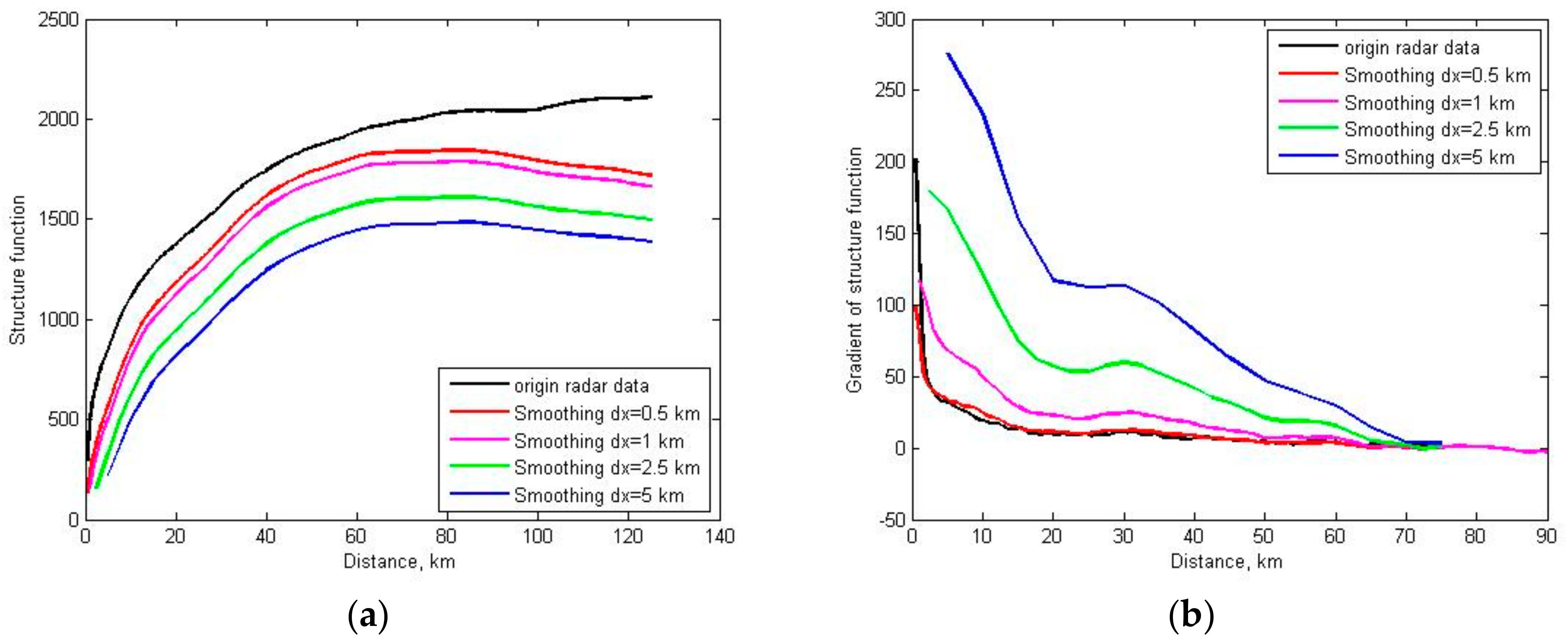


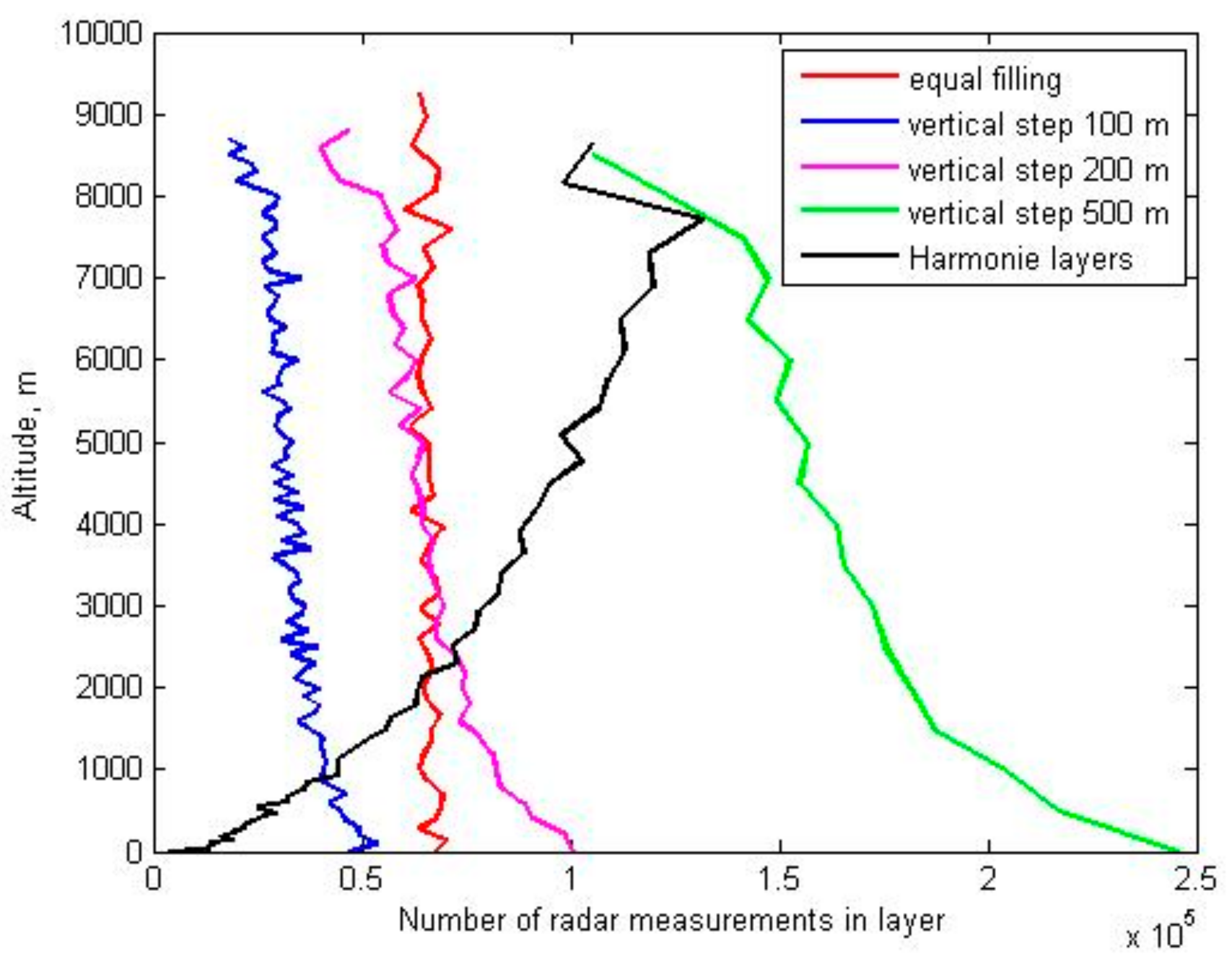
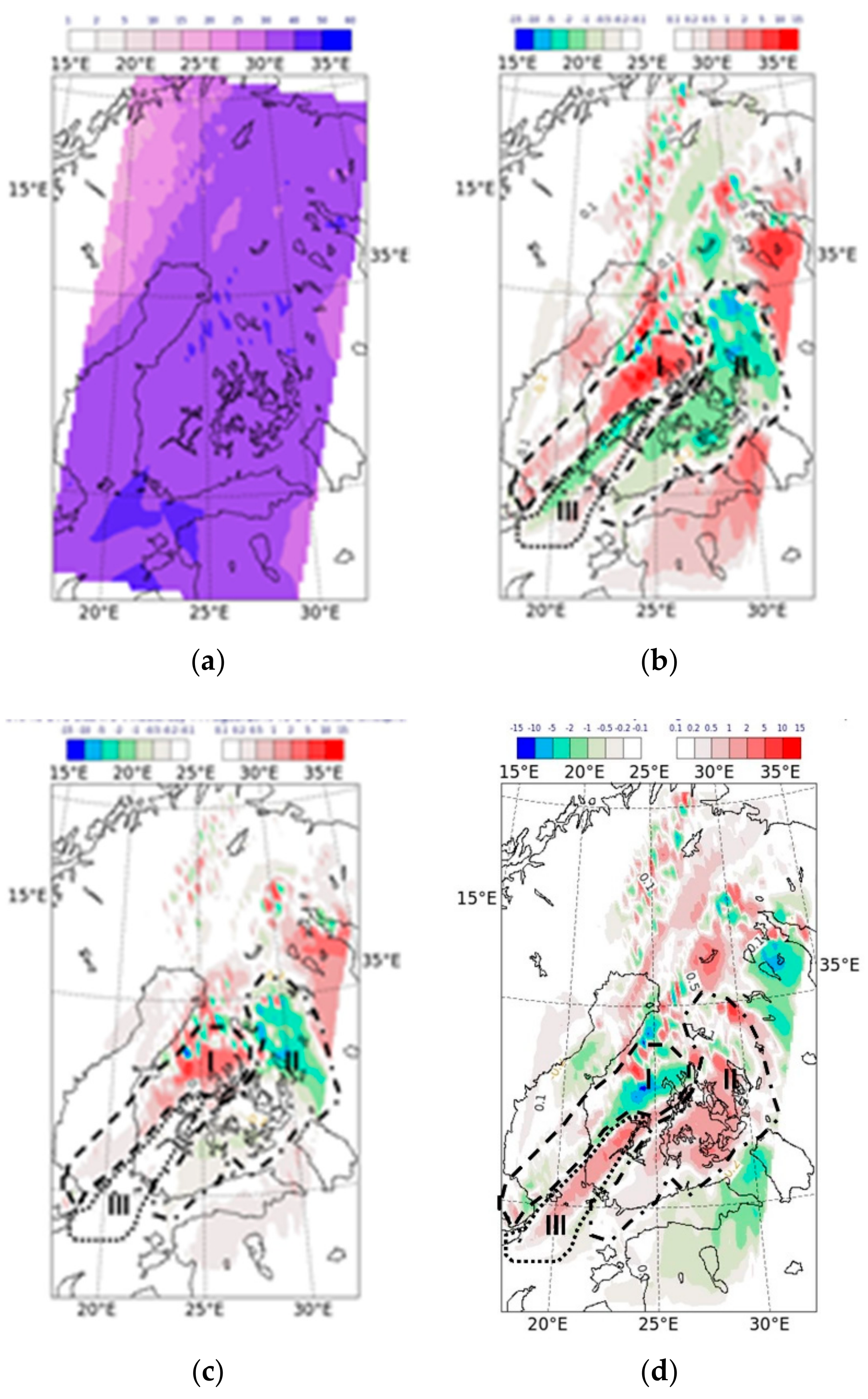
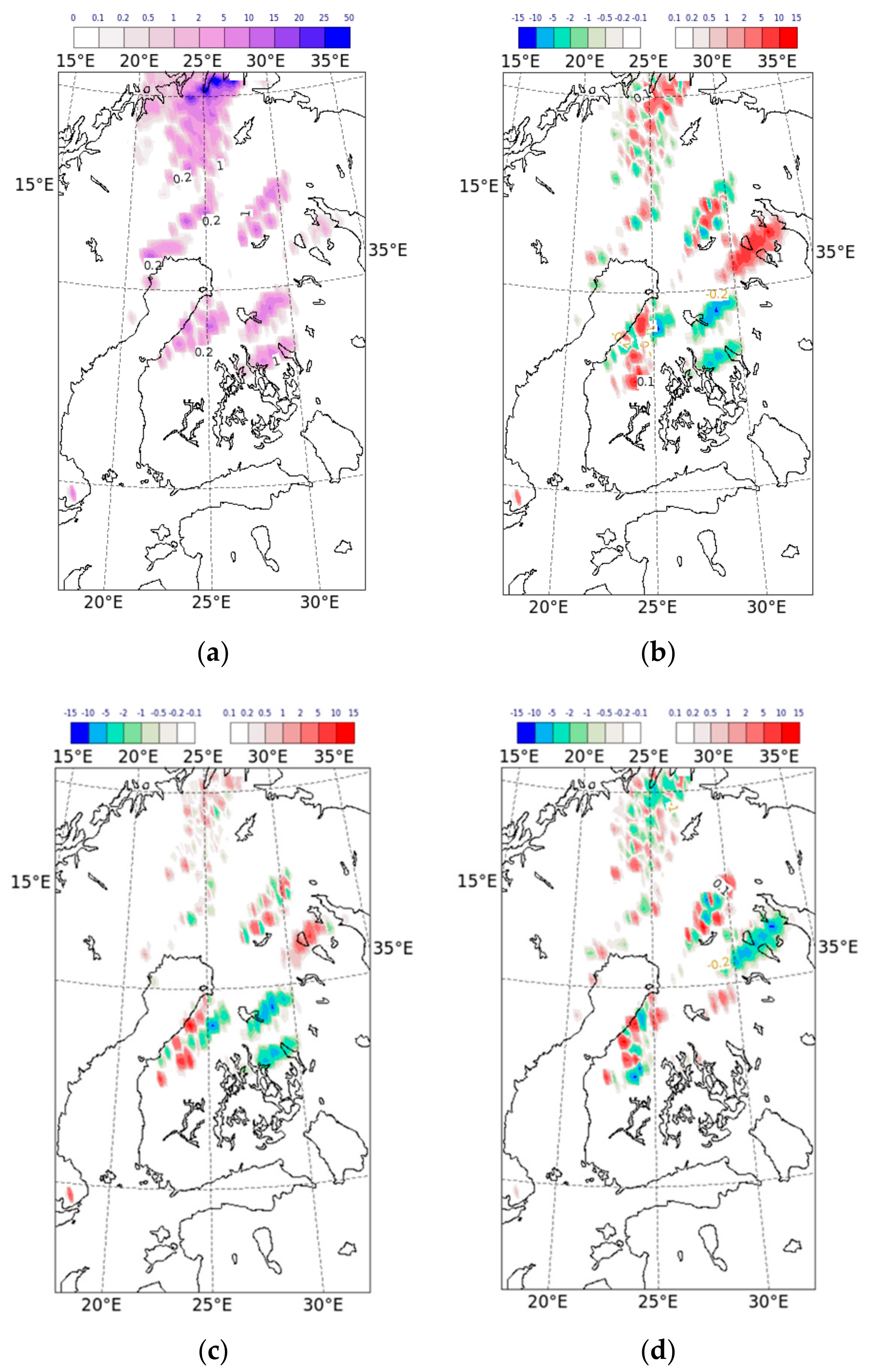
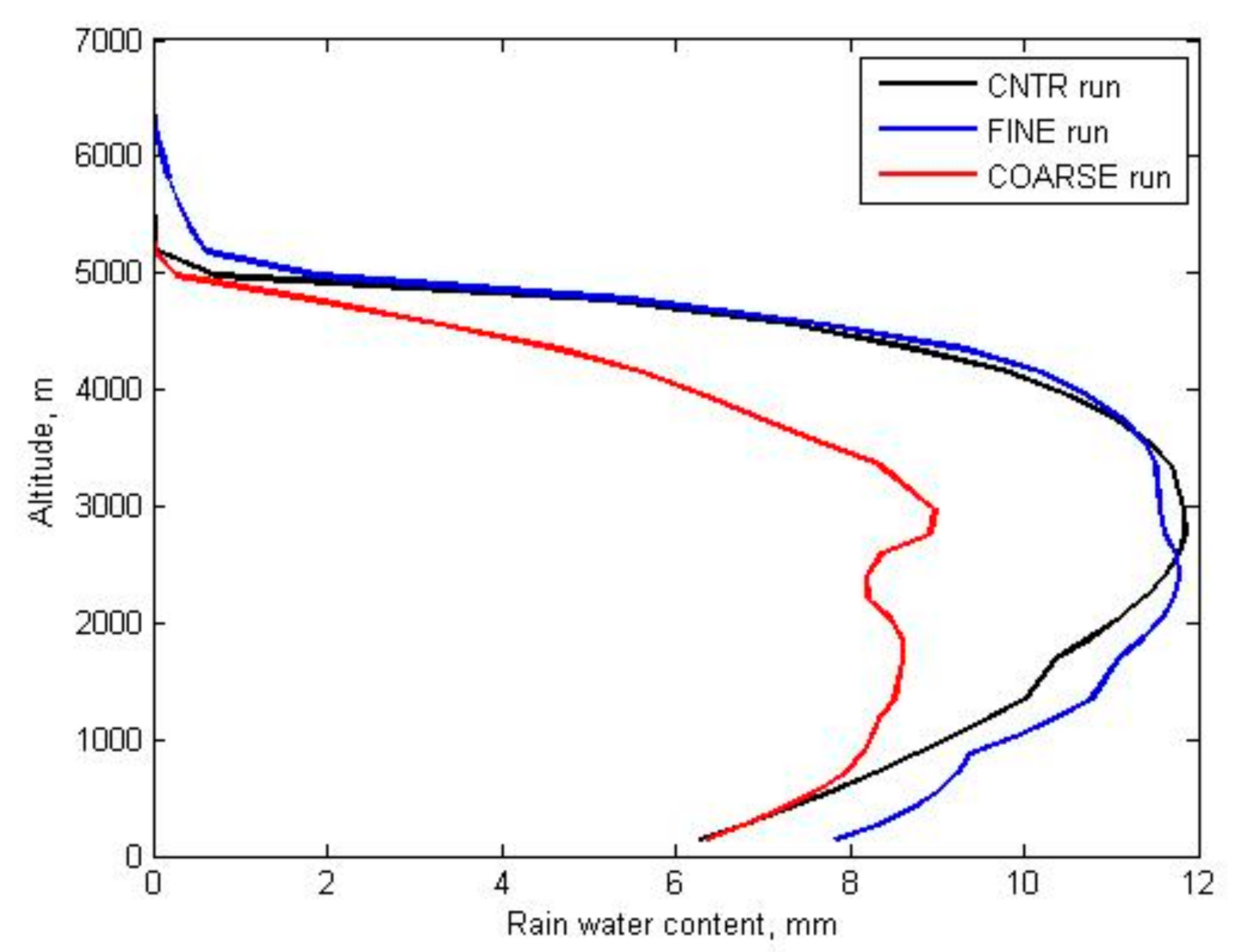
© 2018 by the authors. Licensee MDPI, Basel, Switzerland. This article is an open access article distributed under the terms and conditions of the Creative Commons Attribution (CC BY) license (http://creativecommons.org/licenses/by/4.0/).
Share and Cite
Ivanov, S.; Michaelides, S.; Ruban, I. Mesoscale Resolution Radar Data Assimilation Experiments with the Harmonie Model. Remote Sens. 2018, 10, 1453. https://doi.org/10.3390/rs10091453
Ivanov S, Michaelides S, Ruban I. Mesoscale Resolution Radar Data Assimilation Experiments with the Harmonie Model. Remote Sensing. 2018; 10(9):1453. https://doi.org/10.3390/rs10091453
Chicago/Turabian StyleIvanov, Serguei, Silas Michaelides, and Igor Ruban. 2018. "Mesoscale Resolution Radar Data Assimilation Experiments with the Harmonie Model" Remote Sensing 10, no. 9: 1453. https://doi.org/10.3390/rs10091453
APA StyleIvanov, S., Michaelides, S., & Ruban, I. (2018). Mesoscale Resolution Radar Data Assimilation Experiments with the Harmonie Model. Remote Sensing, 10(9), 1453. https://doi.org/10.3390/rs10091453






